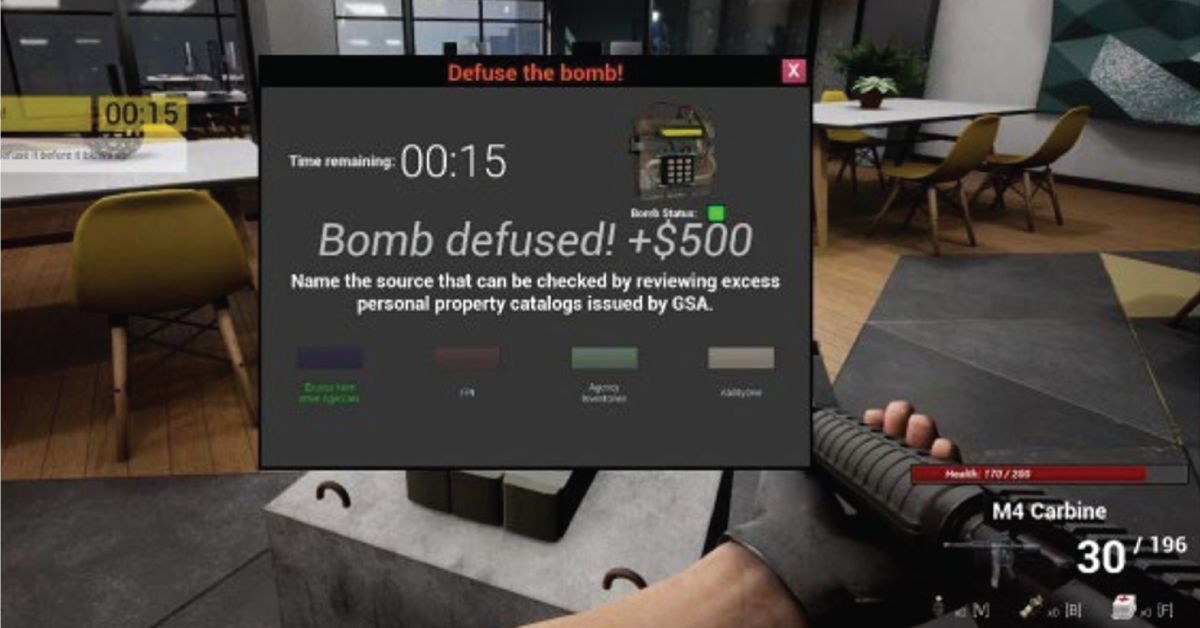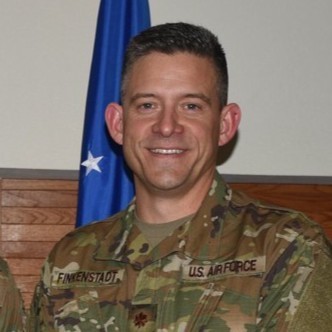DEC 22, 2022
Gamified Learning for Defense Acquisition

In a recently published AIRC Incubator, researchers are exploring how games can train acquisition professionals to develop expertise and better serve warfighters.
Lt. Col. Dan Finkenstadt of the Naval Postgraduate School and Dr. Rob Handfield of North Carolina State University presented their findings on game learning during the 2022 Annual Research Review on November 15.


Finkenstadt said he started to wonder about game learning after watching his son play video games that task players with surviving, such as the rainforest-based Green Hell and the zombie-filled 7 Days to Die.7 Days to Die.
“I was observing my 14-year-old son playing games that had nothing to do with acquisition or supply chains, but he was telling me all these concepts around resource management and supply chain logistics,” Finkenstadt said. “He was learning them from playing these video games.”
Handfield told a similar story. “I also have a son who was an active gamer,” Handfield said. “He’s a biology major now, and they have a lot of virtual environments for studying anatomy and the human body. There is a whole science developing around gaming programming.”
The researchers realized an opportunity to design games that engage acquisition professionals and help them understand real-world concepts before real-world consequences. Normally, these professionals operate in an environment that puts a high price on failure and leaves little room for learning and experimentation.
“It’s not about exploring or learning something new, but just making sure you aren’t wrong,” Finkenstadt said. “If we tried something new in the real world, it would be perceived as a risk to the ultimate mission.”
The researchers listed game traits that can facilitate learning. “Game rules map perfectly onto acquisitions, because we’re a heavily regulated area,” Finkenstadt said. “All games have some level of representation, so we can virtually represent an environment players might not get exposure to daily but might one day need to face.”
Games also provide quick feedback to help players understand their performance. “Fear of failure is something that often prevents people from trying new things in the real world,” Handfield said. “There’s less fear of failure in a game. You might get kicked out of the game, but you could try it again next time.”
To evaluate their ideas, Finkenstadt and Handfield enlisted colleagues to build a basic first-person shooter game that incorporates acquisition concepts. For example, players might have to defuse a bomb by answering a question about property catalogs.
The researchers gave pre- and post-tests to students in the Naval Postgraduate School who played the game and to a control group who only attended classroom lectures.
“We saw better improvement through gaming versus lecturing,” Finkenstadt said. Many players also responded that they would be more likely to study outside of class by playing games.
Finkenstadt and Handfield are now developing two more games. Sinking Ship acts as a virtual escape room where players solve puzzles to access key codes that open doors to safety. Project Admiral simulates a medieval tower under siege.
“You make choices, and some of them give you resources immediately, but they don’t last as long,” Finkenstadt said about Project Admiral. “Some give you more resources in the long term. These are trade-offs that occur in a contingency learning environment.”
The research team will continue Phase 2 through AIRC to understand how to design games that engage and teach student players. They acknowledge that different students enjoy different games, and some students might not enjoy games at all.
“This is new territory for us,” Handfield said. “Most gaming has been done around war simulations, but actually using it for acquisition learning is really new.”
“One of the biggest things we’ve learned is we need a massive player-type research study to look at the overarching player types within defense acquisition,” Finkenstadt said. “Then we can start getting that three-dimensional look at what we should be investing in for game design and building for education and training. We’re excited about this, and we’re having a lot of fun.”
Finkenstadt also presented this research at the AIRC – DAU Quarterly Research Forum on December 9.





